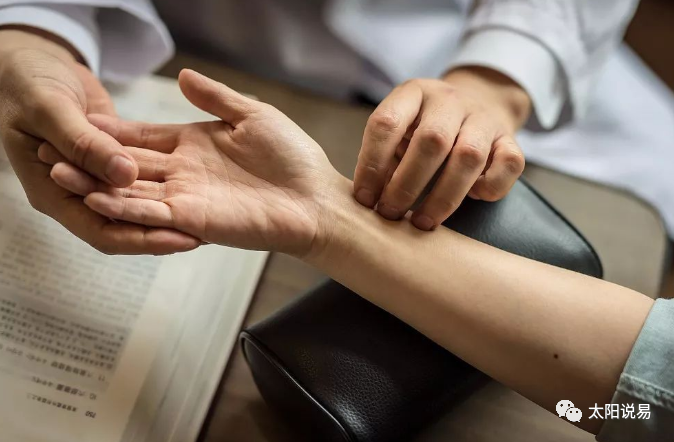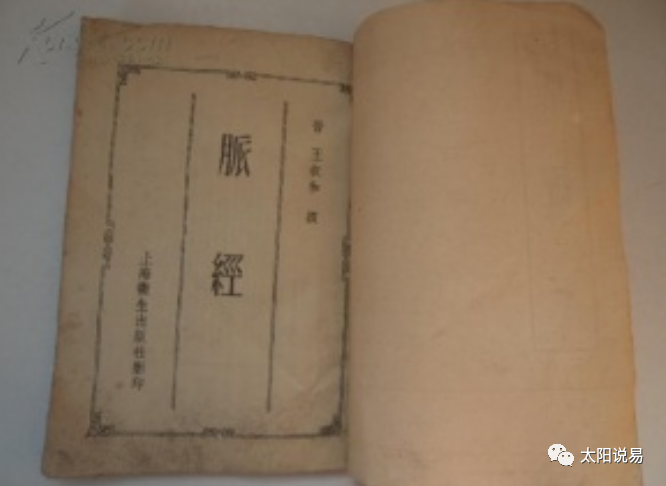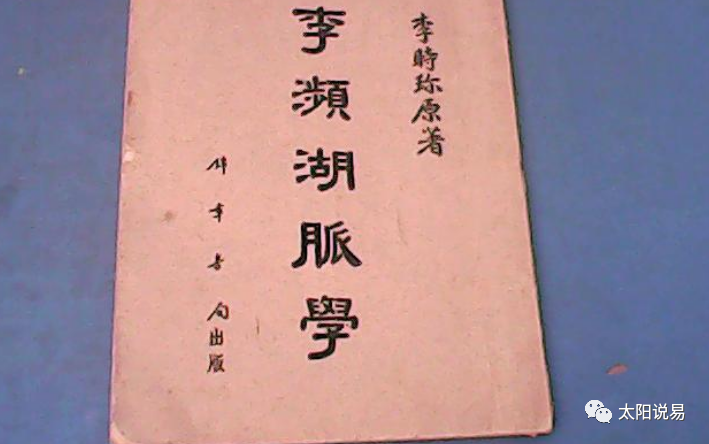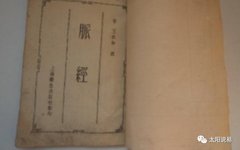
The term Xu Mai (虚脉, Deficient Pulse) literally means an empty or weak pulse. In the three positions of the pulse (cun, guan, chi), whether lifted or pressed, it feels weak. The Pulse Classic states: “The Xu Mai is slow, large, and soft; pressing it reveals a lack of strength, and it feels empty under the fingers.” To understand this, we must analyze it from two perspectives. Broadly, Xu Mai refers to the general category of weak pulses. Narrowly, it refers to a pulse that meets four conditions: slow, large, soft, and empty.

The Essentials of Surgery states: “The diagnosis of Xu Mai shows a lack of strength, is slow, large, and soft; lightly pressing reveals an empty sensation.” As mentioned, Xu Mai has the conditions of being slow, large, soft, and empty; however, in practice, these four conditions do not always align perfectly. Specifically, a slow pulse does not necessarily indicate deficiency; it primarily reflects cold conditions and does not directly indicate Xu. If the condition is one of Xu with cold nature, then the slow pulse must also be accompanied by weakness, making it unreasonable to consider slowness as a necessary factor for Xu Mai. In practice, Xu Mai often coexists with rapid pulses, indicating that listing slowness as a required condition for Xu Mai is inappropriate. Thus, later texts like Three Insights into Diagnosis state: “Under the fingers, the pulse is large and soft, like the feel of chicken feathers; pressing it reveals weakness and lack of strength, and prolonged pressure still does not reveal a root.” The Pulse Verification states: “Xu is large, soft, and weak.” They no longer mention the condition of being slow.

Some may wonder how a large pulse can be a Xu Mai. As stated in the Golden Chamber: “For a healthy man, a large pulse indicates labor; an extremely large pulse also indicates labor.” A large pulse indicates labor, and labor indicates Xu. Here, the large pulse refers to a pulse that is large but weak, feeling empty upon pressure. Zhang Zhongjing juxtaposes Xu Mai with large pulses, indicating that Xu does not necessarily have to be large. The Pulse Classification states: “The essence of Xu is the representation of emptiness and insufficiency, specifically named for being soft and weak.” Therefore, softness and weakness are essential conditions for Xu Mai. The Medical Exploration explains that “Xu Mai is large and soft” by stating: “Whenever this pulse is encountered, it is mostly found in the floating middle position; when pressed, it feels almost imperceptible, as if it cannot be easily felt, appearing large in the floating position, wide beyond the meridians, and soft, indicating weakness that cannot withstand pressure.” Thus, Xu Mai is weak, large in shape, and lacks strength in all three positions.

While Xu Mai has the condition of weakness, mere weakness alone does not constitute Xu Mai. The notion that strength indicates reality and weakness indicates deficiency should refer to real and deficient conditions, rather than real and Xu pulses. Xu Mai is a composite pulse pattern, not a singular factor. Under the conditions of floating, large, and soft, it can coexist with other pulse patterns such as slow, rapid, moderate, and choppy. Xu Mai primarily indicates deficiency conditions, often due to insufficient Qi and blood or organ deficiency. Insufficient Qi fails to propel blood through the vessels, resulting in a weak pulse; insufficient blood fails to fill the vessels, leading to an empty sensation upon pressure. Qi deficiency causes it to disperse outward, while blood deficiency leads to Qi floating without support, resulting in a relaxed pulse, hence the pulse appears large and soft. Thus, the Inner Canon states: “Blood deficiency leads to pulse deficiency.” “When Qi is weak, it cannot reach the surface; the disease is internal.” Organ dysfunction, depletion of essence, blood, and fluids, as seen in various chronic wasting diseases, often presents with Xu Mai. High fever injures Yin, leading to fluid loss, bleeding, or post-vomiting and diarrhea, resulting in insufficient fluids, making the weak pulse even more pronounced.

Xu Mai indicates deficiency conditions, but deficiency can also vary in Qi, blood, Yin, and Yang. Therefore, while Xu Mai is observed, the accompanying pulse may differ. For instance, clinically, Xu Mai may coexist with a choppy pulse, indicating blood deficiency; with a slow pulse, indicating Yang deficiency; or with a rapid pulse, indicating Yin deficiency. Ancients believed: Qi is Yang, representing the floating aspect, while blood is Yin, representing the sinking aspect; thus, a floating pulse that is large and a sinking pulse that is empty indicates blood deficiency. Zhang Jingyue stated: “Xu Mai indicates deficiency of Zheng Qi and lack of strength… floating and weak indicates blood deficiency, sinking and weak indicates Qi deficiency, rapid and weak indicates Yin deficiency, slow and weak indicates Yang deficiency.” Due to the soft and weak nature of Xu Mai, it often indicates insufficient conditions, thus it should be classified as a Yin pulse. Summer heat, as a Yang pathogen, can deplete the body’s original Qi and cause loss of Yin fluids, leading to a pulse that appears deficient, often manifesting as spontaneous sweating, palpitations, and anxiety. In cases of Yin deficiency with heat, due to the depletion of essence and blood, the deficient Yang rises outward, resulting in a pulse that is thin and rapid. It is advisable to use methods to tonify Qi and nourish blood for treatment.

The Inner Canon states: “Blood deficiency leads to pulse deficiency”; however, in clinical practice, Xu Mai is often seen in Qi deficiency conditions. When the left cun position shows Xu Mai, it primarily indicates blood not nourishing the heart; however, when the right cun position shows Xu Mai, the lung governs Qi, thus it may also indicate lung Qi deficiency. The left guan position corresponds to the liver, while the right guan position corresponds to the spleen; the liver often suffers from excess, while the spleen often suffers from deficiency. Therefore, Xu Mai in the guan position is often attributed to spleen Qi deficiency, indicating damage to the middle burner, spleen and stomach Qi deficiency, and reduced transformation, leading to symptoms such as abdominal distension and difficulty digesting food. Prolonged illness can lead to deficiency affecting the kidneys, depleting essence and blood, and Yin deficiency failing to support Yang, resulting in internal heat and bone steaming. Insufficient essence and blood fail to nourish the bones and marrow, leading to atrophy and paralysis, which can also present with a slow and large pulse, all due to insufficient Yin essence and blood, and the outward rise of deficient Yang. Of course, in treatment, those with Qi deficiency should tonify Qi, those with blood deficiency should nourish the essence, and those with both Qi and blood deficiency should tonify both.

Xu Mai indicates deficiency conditions, which is a general rule. Any symptoms of Yin deficiency or blood loss, such as night sweats, nocturnal emissions, blood loss from above or below, or chronic cough, as well as symptoms of Yang deficiency such as dizziness, abdominal distension, and diarrhea, are all indicated by Xu Mai, although the accompanying pulse patterns may differ. However, Xu Mai can also be seen in significant excess conditions, representing a strong presence of pathogenic Qi and a depletion of Zheng Qi, often with a poor prognosis.

Decoding: The ‘Se Mai’ (Choppy Pulse) in Traditional Chinese Medicine
Decoding: The ‘Hua Mai’ (Slippery Pulse) in Traditional Chinese Medicine
Decoding: The ‘Shu Mai’ (Rapid Pulse) in Traditional Chinese Medicine
Decoding: The ‘Chi Mai’ (Slow Pulse) in Traditional Chinese Medicine
Decoding: The ‘Chen Mai’ (Sinking Pulse) in Traditional Chinese Medicine
Decoding: The ‘Fu Mai’ (Floating Pulse) in Traditional Chinese Medicine

